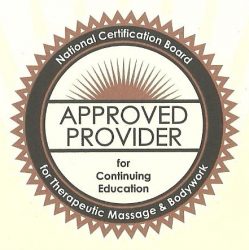The NCBTMB seated their new Board members last week. Bruce Baltz, who has served one term and was not even on the ballot for a second term, was tapped as the new Chair-Elect. Michael McGillicuddy, who was also not on the ballot, was appointed as a therapist member by the Board, and Teresa M. Matthews is filling the remaining therapist member seat. Dr. Stuart Watts has been named the public member.
I wish them all luck, and I feel that they’re going to need it.
To start with, it is my opinion that the NCBTMB is leaving themselves open to a legal challenge of any decision this board might make. I have maintained since his candidacy was announced that Dr. Watts was inappropriately put forth as a public member. I don’t personally know Dr. Watts, but as soon as I read his bio, my thought, and that of several other people who chimed in on my previous blogs about it, felt that he was suitably qualified to be a therapist member, and totally unsuitable to be the public member, based on the bylaws of the NCBTMB. He currently holds a license in two states, although the people trying to defend this decision have said he is retired, and he holds an office in another national organization, which is also against the by-laws, although I was told that he had agreed to quit that position if he was named to the NCBTMB. According to the current bylaws on the NCB website under 6.2 Qualifications. “No Director shall hold a national level office in another competing therapeutic massage and/or bodywork professional or trade organization” and further states………”A Director who is a public member shall not be a Certificant or a practitioner of therapeutic massage and/or bodywork within three (3) years of election, and shall have no material financial interest in the field of therapeutic massage and/or bodywork.” I honestly do not understand how the nominations task force thought he was an appropriate choice for the public member. To me, it’s a big “DUH!”
I also find it less than transparent that the press release did not say he was the public member, but rather put the spin on it that “he has worked for both practitioner rights and the rights of the public throughout his 40-year career.” On a regulatory board, the mandate is indeed to protect the safety of the public. However, this is not a regulatory board in spite of their numerous past attempts to appear as one, and a public member is supposed to represent the viewpoint of a consumer, not be an expert in the field. Watts appears to be an expert in the field with 40 years of experience. I don’t think he is representative of the average consumer and I defy anyone to dispute that. It sounds like splitting hairs, since I would have approved of him as a therapist member. My issue is that I don’t expect a therapist member and a public member to necessarily vote the same way. People have to remember that when you are serving a board, you are not supposed to just avoid a conflict of interest–you are also supposed to avoid the appearance of a conflict of interest.
I have briefly met Matthews a couple of times when I attended the FSMTA convention. She has been a school owner and instructor for 18 years. Baltz and McGillicuddy are both people I know and I am a big fan of both of them. However, I also question the way their appointments came about. Neither were on the ballot sent to certificants. The sudden departure of the previous Chair, Sue Toscano left a therapist seat empty that needed to be filled, so I will assume that was part of the reason. However, I am aware of several other people who had thrown their name in the hat for the election, and I do question that none of them were tapped to fill the empty seat. I have asked both Steve Kirin and Leena Guptha questions in the past about the election process, and they have both replied to me that they are not privy to the goings-on of the nomination committee.
I’ve been nationally certified since 2000, and it seems that there has been controversy on their election process many times….including one time years ago when I threw my own name in the hat. I was interviewed on the phone, and later notified that I had been chosen as a candidate. I was told to write a candidate statement and that it had to be X amount of words; I forget the number. When the ballots came out, the first thing I saw was that my own candidate statement looked ridiculously short compared to the others. I called them on the phone and asked why I was singled out for a short statement. Initially the person on the other end of the phone argued with me that I had misunderstood the instructions. When I sent him the email I had received from them proving my point, he had to back up and apologize, and said that I had received the first draft of the letter by mistake. He said “there’s really nothing we can do about it now.” I was not surprised when I wasn’t elected, because my statement looked idiotic compared to the other candidates. My attitude now is that it was a blessing in disguise that I wasn’t chosen; that particular regime was fraught with management trouble, board trouble, and lawsuits.
I have referred back to my own blogs from past years that had links to the NCBTMB website for the press releases that were put out about some of their major mistakes, and they have all been removed.
The NCBTMB has been dysfunctional for a very long time. Their financial revenues have fallen greatly since the introduction of the MBLEx. Their 990 for 2012 was just posted on Guidestar a couple of days ago and will be the subject of my next blog.
Dr. Leena Guptha stepped into the Chair position about a month ago. Leena is a positive person, and refers to herself as an ambassador for the organization. She has previously served as the national president of AMTA, and I have no doubts that she has the best of intentions. I have no doubts that the new board members, and any of the other people there have the best of intentions. I actually have no doubts that the immediately previous board and management had good intentions…but that has not yet turned things around. Dr. Guptha has stated to me that since she has a three-year term, she will have time to make a real difference and positive changes at the NCBTMB. Time will tell.
I feel that the NCBTMB is on their last chance to get it right. They do not have the financial resources to keep making mistakes. The PR spin that has been put on the new Board Certification doesn’t fly. People want advanced certifications in specific areas, and that hasn’t happened. Developing such things requires a lot of money, and I don’t know that they have it. Leena Guptha is organizing a Think Tank to gather input about the CE Provider program, and I initially agreed to serve on it. However, I’ve taken so much criticism for that in the past few weeks I have decided to back up and punt. I have publicly announced many times that I would not serve an another board as long as I am writing this blog, and even though a committee is not the same as a board of directors, people seem to be concerned that my impartiality will fly out the window. I had even stated to Dr. Guptha that my presence on the CE committee would not prevent me from blogging about them, and she said she didn’t expect it to. It’s a moot point now; I have withdrawn. Even though I am not on the board–it was one of those appearances of a conflict of interest that I referred to above.
I have also served on a previous CE revamping project at the request of Paul Lindamood. About 30 educators came together to discuss it, and the resounding theme was “go back to vetting the individual classes.” That advice has so far been ignored. Ergo, there are a lot of classes approved for CE that are in blatant violation of their own bylaws and that are an embarrassment to the profession and that should be an embarrassment to a board that holds itself out as “defining and advancing the highest standards.” Approving classes in flower fairies and shapeshifting just doesn’t hold up to that mission statement. There is no need to wait for a Think Tank to start taking care of that situation; the new board needs to start taking care of it immediately.
As I said, I wish the new members luck, and I feel sure they’re going to need it. As always, you’re free to disagree with me; this is my blog and my opinion.

